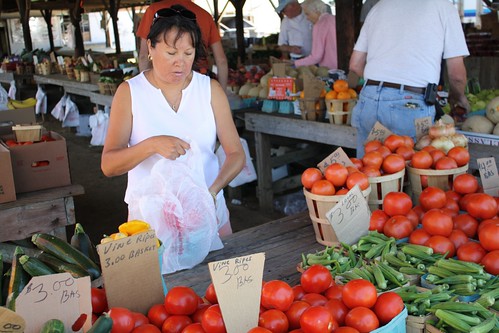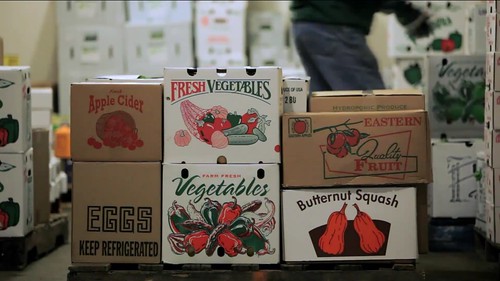
This week we’ve celebrated farmers markets as a vibrant segment of U.S. agriculture that offers a unique and personal way to connect producers and consumers. We highlighted decades of farmers market participation, updated the status of farmers markets across the U.S., offered an example of innovation in the lessons learned by a market in Kentucky, and explained how structure and function interact through farmers market architecture. Now, with National Farmers Market Week coming to a close tomorrow, we thought we should share some perspective on how farmers markets fit into the larger local and regional food landscape.
Many beginning producers use farmers markets as the gateway to direct marketing opportunities. As they do so, they learn valuable retail skills while building their farm’s profitability. The simplicity of bringing goods to a place with a built-in consumer base and a direct connection to the community at-large just makes sense when you’re new to farming.
Small and mid-size farmers, many of whom are beginning producers, make up the majority of farmers market vendors. And, while we’ve continued to see an uptick in listings in the National Farmers Market Directory, farmers markets are just one component of the local food system that deliver fresh, healthy products to consumers.
As farmers continue to look for other opportunities to move more local product to consumers, they should begin to consider distribution models such as local and regional food hubs, multi-farm community supported agriculture operations, or other cooperative marketing structures. Take food hubs for instance: these are businesses or organizations that connect farmers and buyers by overcoming the infrastructure challenges that small and mid-size producers face.
Food hubs are playing a critical role in developing stronger local food supply chains. They’re essentially “farmers markets” for businesses, restaurants, hospitals and schools that want to buy fresh local foods to use in their products, kitchens and cafeterias. Our Transportation and Marketing program explored the “dos and don’ts” of setting up a direct food distribution supply chain in a recent study, Moving Food Along the Value Chain: Innovations in Regional Food Distribution.

In addition to looking at food distribution models, we are looking at opportunities that can bring local farm products into larger established retailers like Wal-Mart and Costco. From the voices of many farmers, we hear that marketing product to such large retail outlets is a major challenge because of the food safety verification or certification requirements. Some producers feel they simply cannot meet the requirements that would qualify them to sell their products to these stores. However, there is good news!!
Through the Fresh Products Division, a part of USDA’s Agricultural Marketing Service (AMS), farmers can obtain auditing services that will help them verify whether they are meeting the requirements of food safety standards. These services are critical for small and mid-sized farms looking to scale up and market product to larger retail outlets.
The future for local food looks encouraging as distribution channels continue to expand in many of our farming communities. Ultimately, as this trend continues, consumers can expect to find high quality, local produce in more markets near them. We are excited about this growth and we expect to facilitate more innovative work in the area of local and regional food distribution, so that we can assist farmers in having greater impact in their business enterprises and our food supply chain.
Visit the AMS website to learn more about food hubs, GAP and GHP certification and farmers markets. The USDA Know Your Farmer, Know Your Food Compass is another helpful reference, illustrating additional ways USDA’s working to support local food. Use the map to discover other work in you community.
